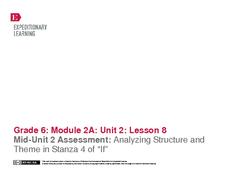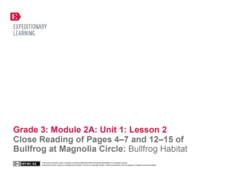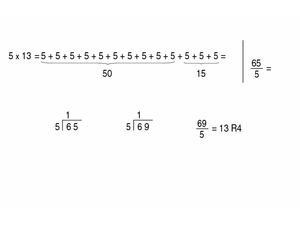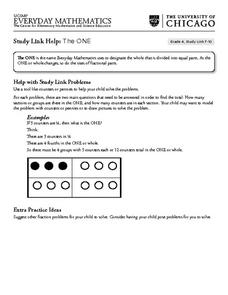EngageNY
Problem Solving When the Percent Changes
Use more than one whole to solve percent problems. The ninth installment in a 20-part series has pupils work percent problems in which they must determine two wholes. Individuals use double number lines to represent and solve the...
Concord Consortium
Petit Fours
Four 4s represent the counting numbers. Pupils attempt to write equivalent expressions to as many counting numbers as possible using only four 4s. Scholars then determine whether the same feat is possible using only three 3s.
Curated OER
Understanding Place Value: Base Ten Models
As an overview of place value involving numbers in the hundreds, this resource would be incredibly beneficial. There are only a few examples, but the graphics make this concept come alive. In a lower grade classroom, this presentation...
Inside Mathematics
Conference Tables
Pupils analyze a pattern of conference tables to determine the number of tables needed and the number of people that can be seated for a given size. Individuals develop general formulas for the two growing number patterns and use them to...
Code.org
Encoding Numbers in the Real World
Ah, the numerous number of numbers. Individuals research different ways of encoding numbers. After conducting their initial research, they find classmates who have researched a different article and the pair share information. The...
Statistics Education Web
I Always Feel Like Somebody's Watching Me
Future statisticians and potential psychics first conduct an experiment to collect data on whether a person can tell if someone is staring at them. Statistical methods, such as hypothesis testing, chi-square tests, binomial tests, and...
EngageNY
Comparing Irrational Numbers
Build on your classes' understanding of irrational numbers by comparing their values. The 13th lesson in the 25-part module has individuals estimate values of both perfect and non-perfect roots. They finish by graphing these numbers on a...
Germantown School District
Close Reading World Religions: Islam
As part of a close reading activity, individuals respond to three questions and craft two short essays based on a passage about Islam, one of the world most widespread religion.
American Museum of Natural History
One-on-One With The Sun
Follow along as Stella Stardust interviews the sun. A fun and informative interview provides scholars with information about the sun.
DK Publishing
Learning 4 - Write the Number
Focus on fours! First, young counters trace the number four (in numeral form) three times and print a few on their own. Next, they count Little Bo Peep's groups of sheep, recording each total. There are four of each, but encourage them...
Scholastic
Lesson One: The Earth, Background and Glossary
How much do you really know about our planet? Middle schoolers build up their prior knowledge about Earth, its placement in the solar system, its composition, and important geological vocabulary with an introductory earth science lesson.
Concord Consortium
Diffusion Across Semipermeable Membranes
Mitochondria use two semipermeable membranes to work properly. Young scientists adjust the pore size for two membranes. They then observe the diffusion of two different sizes of molecules.
Kiz Math
Who Wants to Win Millions? Hundred Dollar Questions
Make praciting addition skills fun by using this game. Learners answer addition problems involving one, two, three, and four-digit numbers. What a great way to practice this basic skill!
National Wildlife Federation
Call of the Wild: Grades K-4
The sound a frog makes lets people know what it's up to. A two-part lesson plan begins by discussing the life cycle of a frog and the individual stages with drawings. The second part has learners listen to the frogs' different sounds and...
EngageNY
Analyzing Structure and Theme in Stanza 4 of “If”
Here is a lesson that provides scholars with two opportunities to stretch their compare-and-contrast muscles. First, learners compare and contrast their experience reading the fourth stanza of If by Rudyard Kipling to listening to the...
EngageNY
Grade 9 ELA Module 1, Unit 2, Lesson 4
As a mid-unit assessment, class members demonstrate their understanding of the concepts covered so far by crafting a formal, multi-paragraph essay in which they analyze how Rainer Maria Rilke's word choices develop the meaning and tone...
EngageNY
Grade 9 ELA Module 3, Unit 1, Lesson 4
Can dogs feel shame? Explore the anthropomorphic connection between human emotions and animal behavior—or lack thereof—with a instructional activity about Temple Grandin's book, Animals in Translation. Ninth graders continue a close...
EngageNY
Close Reading of Pages 4 - 7 and 12 - 15 of Bullfrog at Magnolia Circle: Bullfrog Circle
Scholars take part in a close reading of pages four through seven and 12-15 of the book, Bullfrog at Magnolia Circle: Bullfrog Circle by Deborah Dennard. Readers identify the story's main idea, list its key details, and examine...
National Nanotechnology Infrastructure Network
Big vs. Little - Macro to Micro Lesson 4
Make a big deal out of things the class can't see. Young scientists get an introduction to nanoscience in the fourth installment of a five-part series on scale. The instructional activity discusses current innovations in nanotechnology...
US Department of Commerce
Apportionment: Grades 3-4
Apportionment is a big word for young pupils. Use a helpful cartoon video and worksheet with data set to help them understand how the census fuels representative democracy. After examining how the census determines the number of seats a...
Core Knowledge Foundation
Unit 4: The Time Machine by H. G. Wells Teacher Guide
Lead your readers into the fourth dimension as time travelers with a Core Knowledge Language Arts (CKLA) Teacher Guide of H. G. Wells's The Time Machine. The 144-page guide includes a unit calendar, introduction, nine lessons, teacher...
Curated OER
Two-Digit Plus One-Digit Addition (A)
In this math worksheet, students solve 100 problems in which 2 digits are added to one digit numbers. Example: 44 + 9. Problems are written in a vertical format and are closely spaced.
Curated OER
Division Using Number Lines and Repeated Addition
For this division worksheet, students read about using number lines and repeated addition to solve division problems and solve 7 problems. Many examples are completed to guide students.
Curated OER
The One
In this problem solving worksheet, 4th graders utilize counters or pennies to learn about the parts of a whole in 4 groups of 3 circles that equal 12 counters.
Other popular searches
- Largest 4 Digit Number
- Tracing Number 4
- Tracing of Number 4
- Printing of Number 4
- 4 Digit Number Concepts
- Number 4 Recognition
- 4 Digit Subtraction With Zero
- Three Four Digit Addition
- Tracing the Number 4
- Printing Number 4
- Multiplication by Number 4
- Writing the Number 4

























